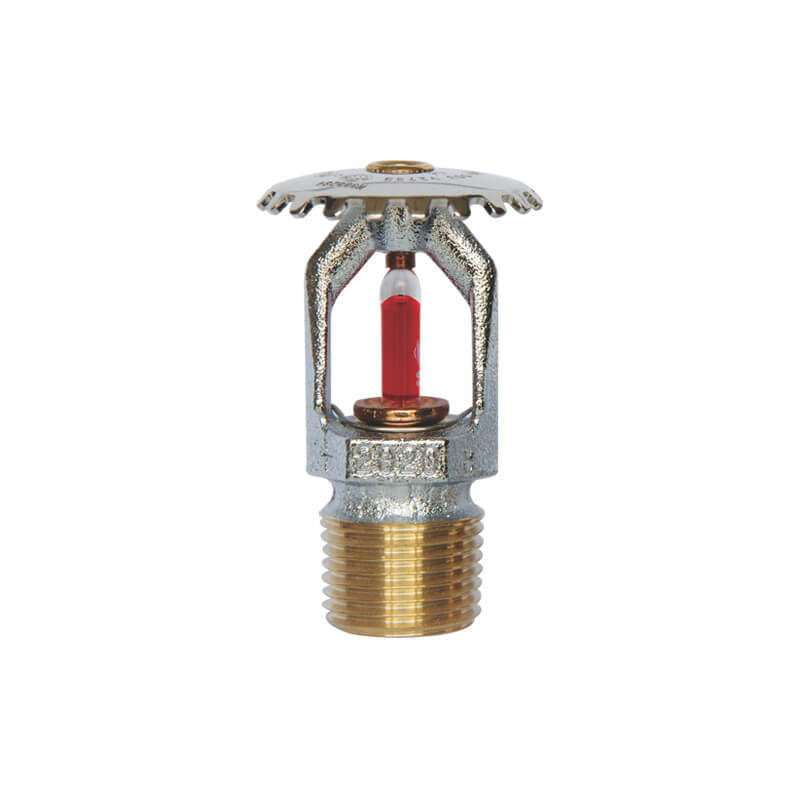Glass bulb fire sprinkler have been a significant advancement in fire protection systems, offering improved functionality and aesthetics compared to traditional fire sprinkler heads. While I don’t have access to real-time data or future predictions, I can provide speculative insights into how glass bulb fire sprinklers could shape the future. It’s important to note that these are hypothetical possibilities and may or may not reflect the actual developments in the industry. Here’s a glimpse into the potential ways glass bulb fire sprinklers could shape the future:
Enhanced Aesthetics:
Glass bulb fire sprinklers are known for their sleek and unobtrusive design. In the future, these sprinklers could continue to evolve with even more aesthetically pleasing options. Manufacturers may explore customization possibilities, including different glass colors, shapes, and finishes to seamlessly integrate sprinklers into various architectural designs.
Advanced Fire Detection:
Glass bulb fire sprinklers have a temperature-sensitive glass bulb that bursts when exposed to high heat, activating the sprinkler system. Future advancements may include more precise and responsive detection mechanisms. This could involve incorporating advanced technologies, such as heat sensors, infrared detection, or artificial intelligence, to improve fire detection accuracy and reduce false alarms.

Integrated Monitoring and Control:
In the digital age, glass bulb fire sprinklers could integrate with smart building systems and fire alarm networks. This integration would enable real-time monitoring, remote control, and data analytics for fire safety management. Sprinkler systems could be connected to centralized control panels, allowing for efficient monitoring, quick response, and proactive maintenance.
Sustainability and Water Conservation:
As environmental concerns grow, future glass bulb fire sprinklers may focus on sustainability and water conservation. Manufacturers may develop sprinkler heads that optimize water usage, reduce waste, and minimize environmental impact. This could involve the use of low-flow technologies, water-efficient nozzles, or alternative extinguishing agents that require less water.
Integration with Building Information Modeling (BIM):
Glass bulb fire sprinklers could integrate with Building Information Modeling (BIM) software, enhancing the design and installation process. BIM models could include accurate representations of sprinkler systems, enabling architects, engineers, and contractors to seamlessly integrate them into digital building designs. This integration would improve coordination, clash detection, and overall system efficiency.
Predictive Maintenance and Diagnostics:
Future glass bulb fire sprinklers could incorporate predictive maintenance capabilities. By integrating sensors and data analytics, these sprinklers could monitor their own performance, detect potential issues, and provide early warnings of maintenance requirements. This proactive approach would enable more efficient maintenance planning and reduce system downtime.
Improved Fire Suppression Efficiency:
Ongoing research and development may lead to innovations that further improve the fire suppression efficiency of glass bulb fire sprinklers. This could involve advancements in sprinkler head design, nozzle technology, or the development of new extinguishing agents. These improvements would enhance the effectiveness of fire suppression while minimizing water damage and reducing the risk of false activations.
It’s important to remember that these possibilities are speculative and represent potential directions for the future of glass bulb fire sprinklers. The actual industry developments will be shaped by technological advancements, regulatory requirements, market demands, and other factors. Staying informed through industry publications, attending trade shows or conferences, and consulting with professionals in the fire protection field will provide the most accurate and up-to-date insights into the future of glass bulb fire sprinklers.